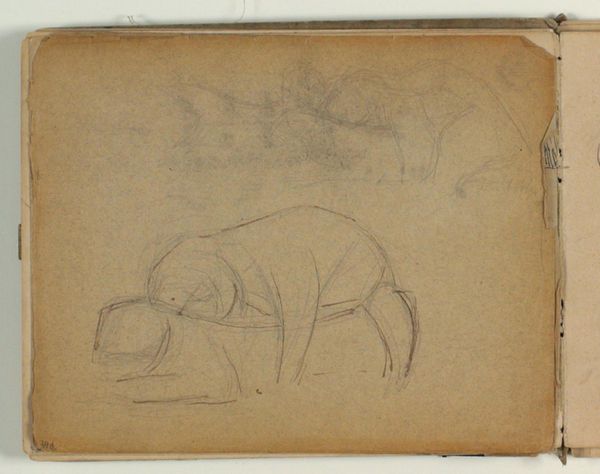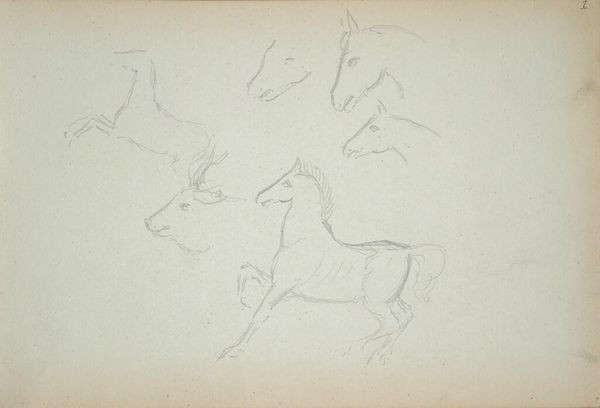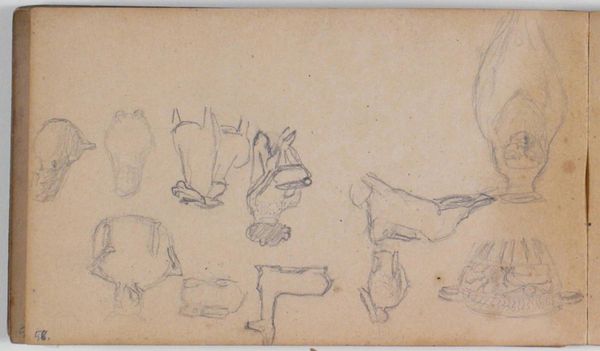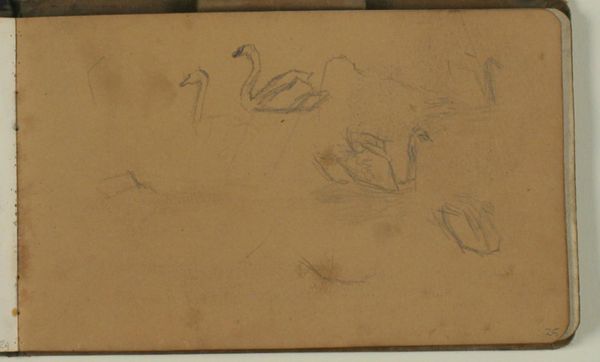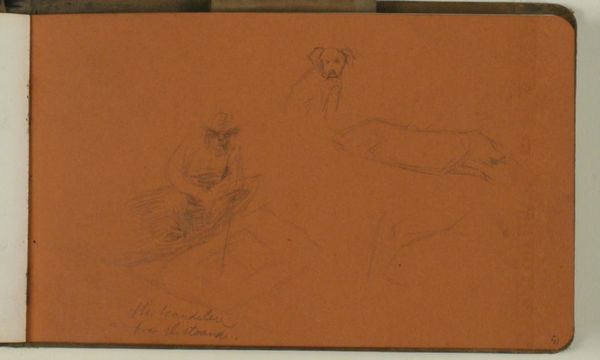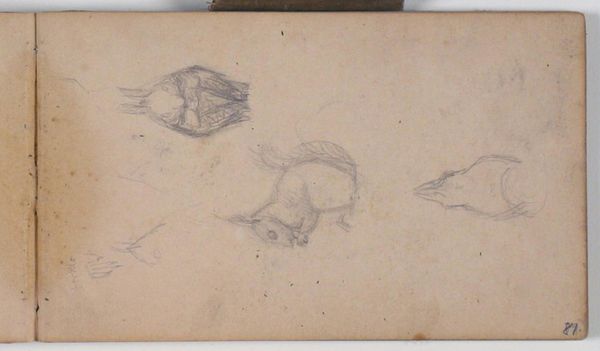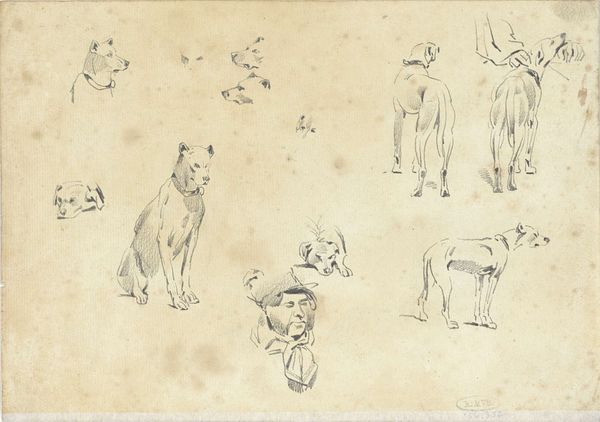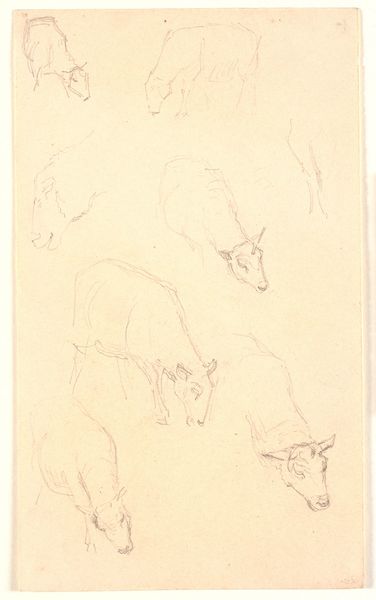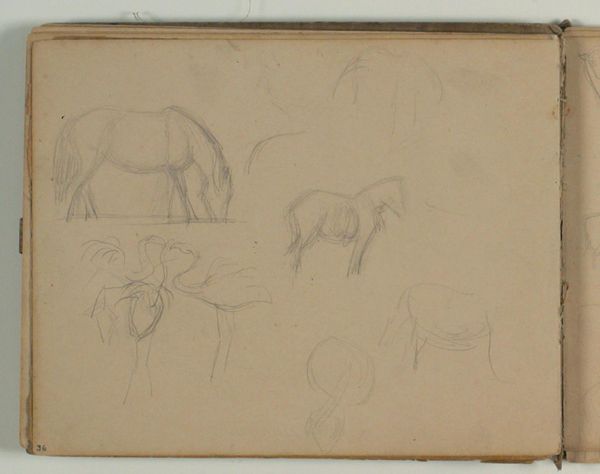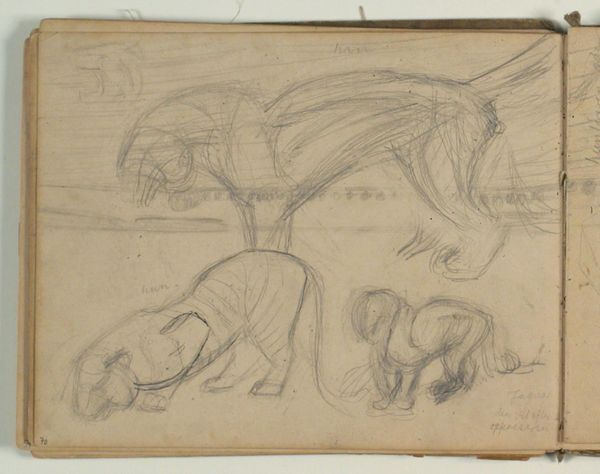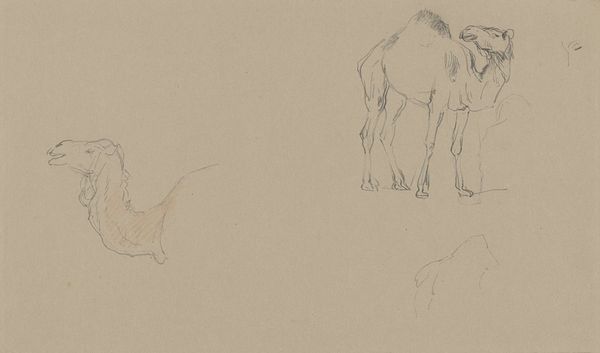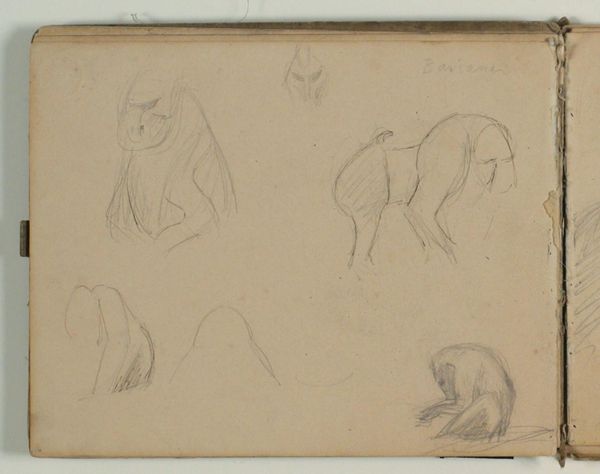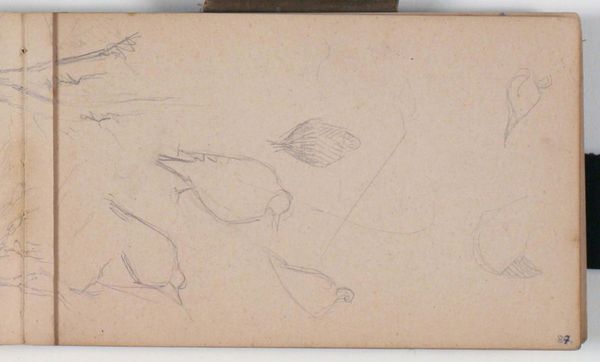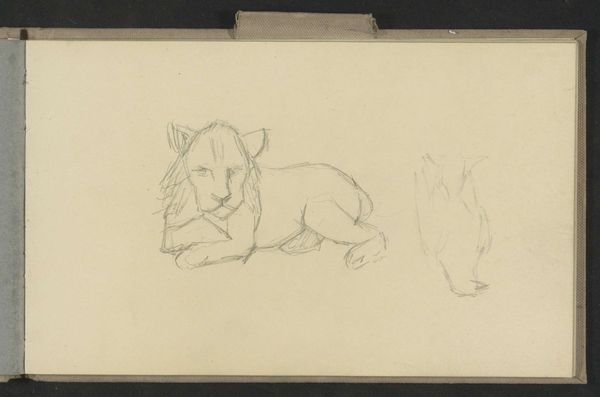
drawing, paper, pencil, charcoal
#
drawing
#
organic
#
animal
#
pencil sketch
#
landscape
#
figuration
#
paper
#
coloured pencil
#
underpainting
#
pencil
#
line
#
charcoal
Dimensions: 101 mm (height) x 168 mm (width) (bladmaal)
Editor: This drawing, "Studie af flyvende fugle, fluer og et dyr," from 1896, by Niels Larsen Stevns, appears to be a study in pencil on paper. What strikes me is the seeming disjunction between the elegant, swift birds and the more imposing lion, which suggests two completely different states, locations or situations. How do you interpret this juxtaposition? Curator: That's a keen observation. Viewing this study through a historical lens, it's worth considering the function of art academies at the time. Stevns likely created this sketch within such an environment, where mastering animal anatomy and movement was crucial, hence the eclectic assembly. Editor: So, it’s more of a practice piece than a statement? Curator: Exactly. We might even speculate about its potential societal implications. In 19th-century Scandinavian art, lions weren't frequently depicted from life, because they were mostly found in warmer places or, conceivably, circuses or zoos, reflecting shifting imperial views on nature, spectacle and power, filtered and re-imagined for public consumption through academic settings. What does that consideration prompt in you? Editor: It highlights how even sketches can reveal the way artists navigated – and perhaps negotiated – cultural expectations and exotic elements as promoted via popular venues. So, Stevns's image of the lion also signifies a level of Scandinavian society's encounter with previously distant places. Curator: Precisely. Also consider, in addition, the art’s function as pedagogical preparation: such ‘academic’ skills were essential, not least to give painters authority when picturing other (even agricultural) subjects – and therefore, maybe also over nature itself! Editor: I had never thought that a lion in a drawing class could be connected to that kind of broader thinking. It's a great perspective! Curator: I agree, analyzing sketches like these offers a richer understanding of art within broader institutional frameworks.
Comments
No comments
Be the first to comment and join the conversation on the ultimate creative platform.
